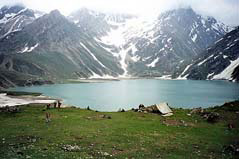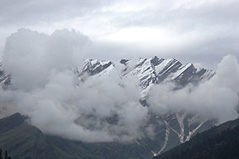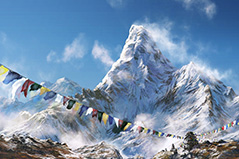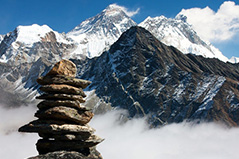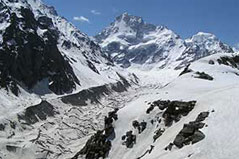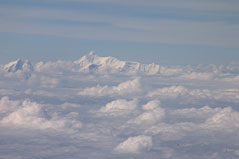
Geological, the Himalaya is still young and growing, said to have been formed only 60 million years ago when a traveling crust of earth from the South Pole collided with Laurasia, folding up the Himalaya. Today, this great mountain system plays an invaluable role in determining the quality of life on the subcontinent. The mountain range controls the climate of India by holding the monsoons till the appropriate time the protecting the land from the winds of the cold Siberian winter. The snows from the Himalayas feed the perennial northern rivers assuring drinking water and farmland irrigation.
The climatic and geological diversity of the Himalaya had led to the creation of an unique ecosystem which holds a rich wealth of natural resources, both living and non-living. The sharp zoning in vegetation types and the resultant habitats are the home of a large assemblage of birds and animals. Himalayan flora is unique. It encompasses forests of all types - tropical swampy forests, deciduous forests, coniferous forests, rhododendron forests, alpine meadows and even hot and cold deserts.
The Himalaya is, however, not just a refuge for primitive forms of life. Human civilizations and cultures flourish here. The mountains are a melting pot of plants, animals and human groups. The Himalaya is more than the world's youngest and highest mountains, they are treasure house of knowledge that is waiting to be explored.

The Himalaya is like a magnet, drawing to them all those who have the indomitable will to challenge its slopes and glaciers. For centuries sages have crossed their high and hazardous passes to discover places of pilgrimage like Kailash, Badrinath, Kedarnath, Gangotri, Yamontri and Amarnath. Again, traders, hunters and porters crossed Himalayan passes thousands of feet high to exploit the natural wealth of the mountains. They established trade routes and connected the many regions of the Himalaya, unifying the people of the mountains.
